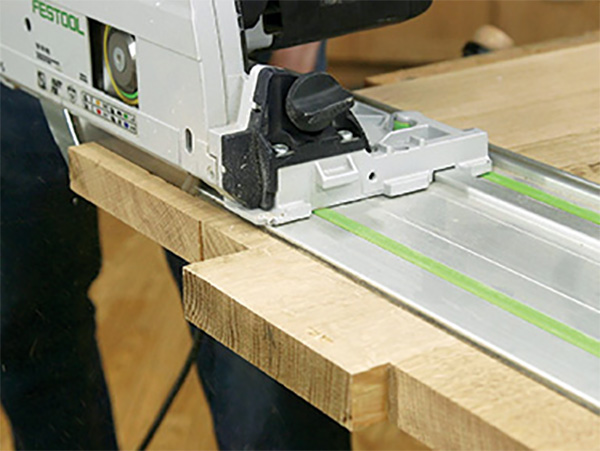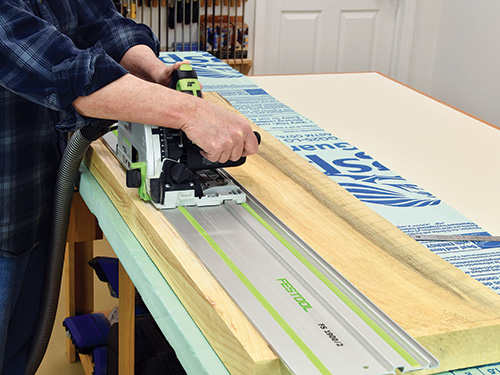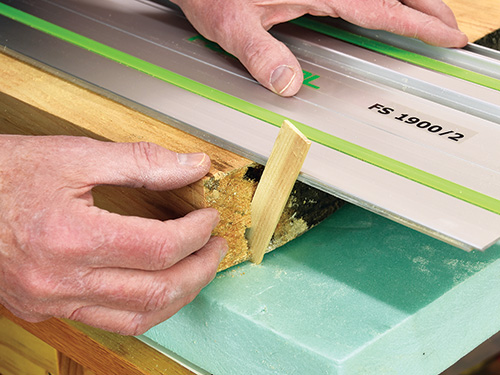
Common 10″ table saws typically have a cutting depth of 3″ to 3-1/2″, while 12″ machines cut around 4″ deep. That’s plenty to tackle most slabs, but the problem is wrangling that slab atop the saw and working it accurately and safely through the cut. Plus, you still need a square edge to do it. While most track saws top out at around 2-1/8″ cuts, they offer a strict advantage here.
Echoing the take-the-saw-to-the-work mantra, once the slab is supported on a bench or other work surface, there’s no wrangling at all during the cut. You may need to make the cut in two passes for slabs that exceed the saw’s maximum cutting depth.

Making the first cut is straightforward. As an example, let’s use a 2-1/2″-thick slab of pine for a bench seat project that will have a live edge in the front but a squared back edge. To cut the slab to width, first measure and mark the workpiece and set the track appropriately to cut that back edge. Don’t be tempted to do the first cut as deep as you can, but rather make both cuts fairly equal by setting the saw’s depth to a bit more than half the slab’s thickness.
Now, you could have drawn a cut line all the way around the slab, but there’s no need. Flip the slab over to expose the uncut side (the only juggling you have to do), then slip thin pieces of wood or other material snuggly into the exposed kerf on each end to act as registers for the cut. Slide the track’s cutting edge carefully up against the registers, and bingo, you’ve exactly matched the cut on the other side.

Make the second pass to complete the cut. If you’ve done this correctly, there should be very little or even no “seam” where the two cuts overlapped. A light sanding will remove this easily, leaving a cleanly cut edge.





